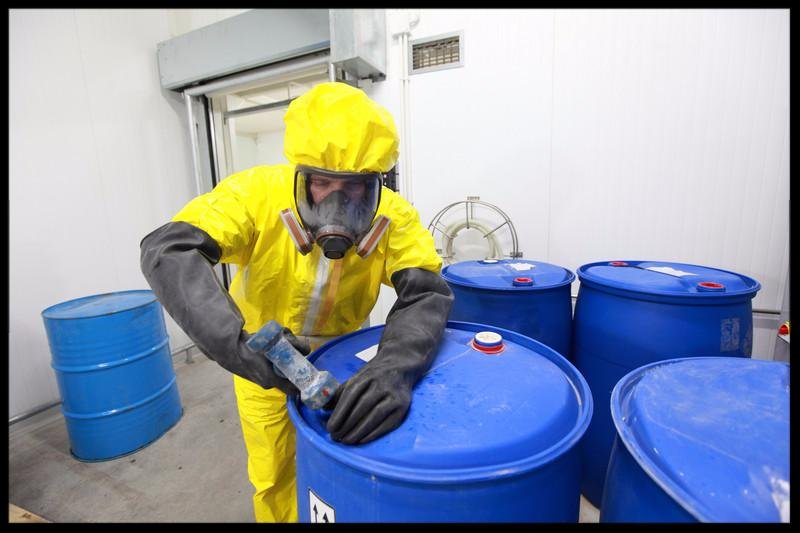Working in the construction industry can be physically demanding, with tasks that often involve kneeling, squatting, and repetitive motions. One area of the body that is particularly susceptible to injuries in this line of work is the knees. Knee injuries can be painful, and debilitating, and can significantly impact your ability to perform your job effectively. However, by following a few simple tips, you can minimize the risk of knee injuries and protect your long-term health. In this blog post, we will discuss five essential tips for protecting your knees in the construction industry.
Read : back-injury-prevention
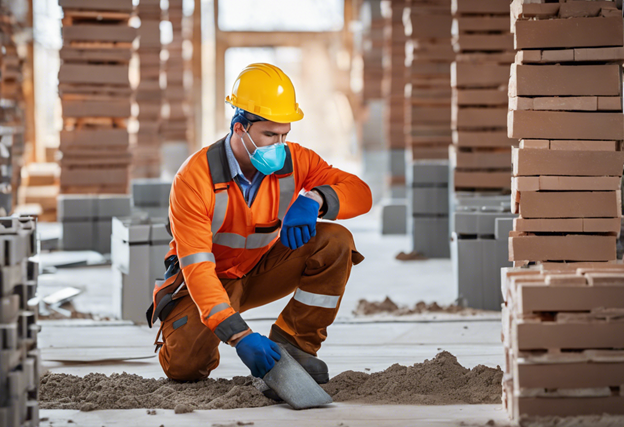
Introduction to Knee Health in Construction Work
The construction industry demands physical robustness, with workers often engaged in tasks that place significant stress on their joints, particularly their knees. Considering the vital role that knee health plays in the mobility and overall well-being of construction workers, understanding the mechanics and potential risks associated with knee-related injuries is paramount.
Knees serve as complex hinge joints that enable a range of motions from walking to kneeling, both of which are common in construction work. The knee contains several components such as ligaments, tendons, cartilage, and bones that can be affected by repetitive movements, heavy lifting, and sustained pressure – activities typical in the construction sector.
Repeated stress on the knee may contribute to conditions such as:
- Tendonitis
- Bursitis
- Meniscal tears
- Patellofemoral pain syndrome
Read: 9 tips to prevent carpal tunnel syndrome
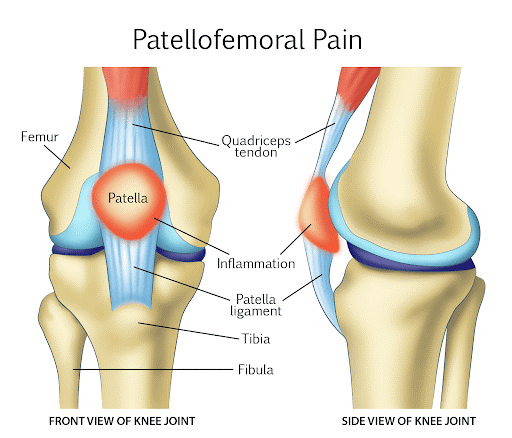
Moreover, construction workers often handle heavy materials and operate machinery that can cause vibrations, leading to increased fatigue and risk of acute injuries to the knee joint. Prolonged or improper kneeling can exert pressure on the patella, potentially leading to chronic pain and conditions like prepatellar bursitis, commonly referred to as “housemaid’s knee.”
Ensuring knee health is critical not only to safeguard against immediate injuries but also to prevent long-term issues that could impede a worker’s capacity to carry out their duties and reduce their quality of life. Therefore, construction workers and employers alike must prioritize knee protection strategies that reduce the risks of injury. This entails adopting best practices ranging from correct lifting techniques to the use of supportive equipment. The following tips offer a guide to preserving knee health within the demanding context of construction work.
Understanding the Risks: Common Causes of Knee Injuries on the Jobsite
In the construction industry, workers often engage in activities that put considerable stress on their knees. Understanding the common causes of knee injuries is critical for implementing effective preventive measures.
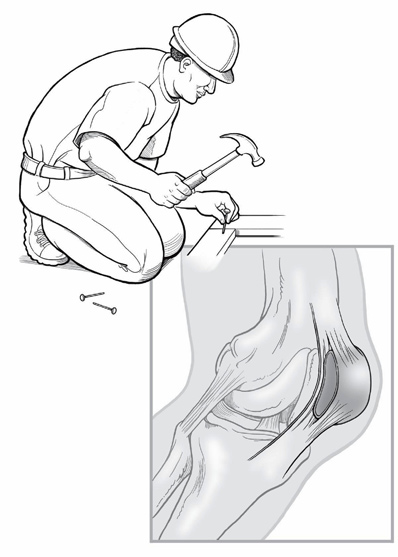
- Repetitive Motions: Tasks that require repeated knee use, such as installing flooring or tiling, can lead to overuse injuries. The continuous strain can cause inflammation and degeneration of knee structures.
- Excessive Force: Lifting heavy materials or equipment improperly can result in acute trauma or gradual damage to the knee joint due to excessive force being placed on it.
- Falls: Slips, trips, and falls are prevalent on construction sites, and a bad fall can easily result in serious knee injury, including sprains, fractures, or ligament tears.
- Jumping or Dropping from Heights: When workers jump down from scaffolding or equipment, the impact on landing can damage the knee’s cartilage and ligaments, even if it doesn’t feel painful immediately.
- Awkward Postures: Working in confined spaces often forces construction workers into unnatural positions, which can strain the knee joint and surrounding muscles.
- Unexpected Terrain: The uneven or unpredictable nature of construction sites can lead to twisted knees or missteps that put undue pressure on the knee joint.
By identifying these risk factors, workers and management can collaborate to develop strategies that minimize the likelihood of knee injuries. Protective gear, proper technique training, and proactive health measures stand as critical components in protecting the knees—essential joints for mobility and pain-free work life. Employers must prioritize knee safety to maintain a healthy workforce and reduce the risk of long-term disability among employees.
The Importance of Proper Footwear: Choosing the Right Boots for Knee Protection
In the construction industry, every piece of protective equipment is a crucial ally in maintaining worker safety and preventing injury. Proper footwear, especially boots designed for knee protection, is essential. These boots do not merely shield the feet; they also play a significant role in supporting and stabilizing the knee joints by offering essential cushioning and support.
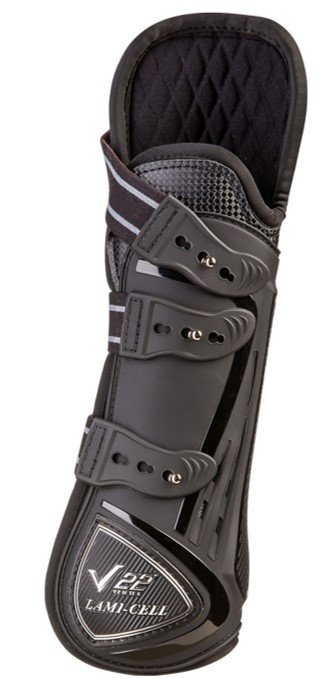
Selecting the appropriate boots involves several key considerations:
- Material and Durability: Look for boots made of quality materials that can withstand the rugged demands of the construction environment. Durable leather, which conforms to the shape of the foot over time, is a top choice, offering both flexibility and strength.
- Sole Design: The boot’s sole is fundamental for knee protection. Soles should provide ample shock absorption to minimize the impact on the knees. Anti-slip technology also prevents slips and falls, which are common causes of knee injuries.
- Arch Support: Proper arch support is paramount for knee health. Boots should have a well-designed insole that supports the arch, reducing strain on the ligaments of the knee.
- Ankle Support: High-top boots provide additional ankle support, which is essential to prevent unnatural twisting of the knee.
- Fit and Comfort: A boot that fits well is less likely to cause blisters or other foot injuries, ensuring that the worker maintains a proper gait, which indirectly protects the knees.
It’s also worth mentioning that when boots help to maintain correct posture and distribute weight evenly, they alleviate unnecessary stress on the knees. Thus, workers in the construction industry should invest the time to find footwear that provides the best protection for their needs, understanding that the right boots are a fundamental component of knee safety. Regular replacement of boots when they begin to show wear is also critical, as compromised footwear can no longer provide adequate support or protection.
Read: Photo of the day: Types of Foot Protection
Ergonomic Kneeling: Techniques and Tools to Reduce Strain
In the unforgiving arena of construction work, proper kneeling techniques and ergonomic tools are critical in protecting knee health. An alarming number of industry professionals suffer from knee-related injuries due to improper kneeling and a lack of supportive equipment. Understanding the best practices of ergonomic kneeling is essential.
Firstly, construction workers should prioritize the use of knee pads. These come in various forms, such as foam, gel, or rubber, and they are designed to cushion the knees from hard and uneven surfaces. Workers should choose knee pads that fit snugly without cutting off circulation, and they should be adjustable to stay in place throughout the day.
Another technique involves the correct way to transition into a kneeling position:
- Approach the area slowly and maintain a straight back.
- Lower the body by bending the hips and knees rather than the waist.
- Distribute weight evenly between both knees or use one knee with the other foot flat on the ground for balance.
In addition to personal protective equipment, workers can utilize ergonomic mats or kneelers when working on hard surfaces. These mats are often made from thick, resilient foam that can help absorb shock and reduce pressure on the knees.
Dynamic work methods, which involve alternating between standing, sitting, and kneeling, can also prevent strain on the knees. Incorporating brief stretching sequences to keep the muscles supple is beneficial.
Finally, training in proper lifting techniques is indispensable. Workers should be educated on how to lift with their legs, not their back, and how to avoid twisting movements while holding heavy loads, as these actions can indirectly impact knee health.
By integrating ergonomic techniques and tools into the daily routine, construction professionals can significantly diminish the risk of knee injuries, ensuring both longevity in their careers and a better quality of life.
Personal Protective Equipment (PPE): The Role of Knee Pads in Injury Prevention
In construction, where manual labor often necessitates working on one’s knees, protective gear becomes indispensable for injury prevention. Knee pads are a crucial category of Personal Protective Equipment (PPE) that serve to safeguard the wearer from acute and cumulative trauma to the knee region.
Knee pads offer several layers of protection in high-risk environments:
- Cushioning: Quality knee pads provide a soft, yet firm, buffer between the knee and hard surfaces, diminishing the impact during kneeling, crawling, or when accidental falls occur.
- Distributing Pressure: They disperse the weight and stress away from the knee caps to a larger surface area, minimizing the risk of stress injuries and conditions like bursitis or tendinitis.
- Preventing Cuts and Abrasions: In construction sites riddled with sharp objects and rough materials, knee pads act as a barrier, preventing lacerations and other surface injuries.
The effectiveness of knee pads hinges on several factors:
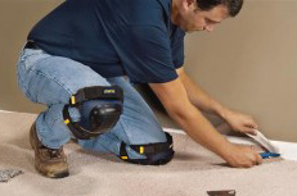
- Fit and Comfort: Properly fitted knee pads enhance mobility and adherence to safety practices, as workers are more likely to wear them consistently if they do not restrict movement or cause discomfort.
- Durability: High-quality materials and construction are pivotal in ensuring the knee pads can withstand harsh conditions and prolonged use, thereby providing dependable protection over time.
- Certification Standards: Employers should ensure that the knee pads meet or exceed safety standards set by authoritative bodies such as the Occupational Safety and Health Administration (OSHA) and the American National Standards Institute (ANSI).
Integrating knee pads into mandatory PPE protocols is a tangible step toward mitigating knee-related injuries in construction. It’s essential that workers are trained on their proper use and maintenance to maximize protection. Regular inspections for wear and tear, and prompt replacement of damaged knee pads, will uphold the integrity of this critical safety measure.
Training and Technique: How Proper Lifting Safeguards Your Knees
Protecting one’s knees in the construction industry is paramount and begins with comprehensive training and the correct lifting techniques. Workers must understand the anatomy and mechanics of the knee joint to appreciate the importance of proper form. The knee joint functions optimally when the body is aligned, and forces are evenly distributed.
To safeguard knees when lifting heavy materials, workers should adhere to the following steps:
- Practice the Squat Lift: Begin by standing close to the object with feet shoulder-width apart. Squat down bending at the hips and knees only. Avoid bending at the waist, which can put undue stress on the knees.
- Maintain Proper Posture: Keep the back straight and chest out. This posture ensures that the spine supports the lift, not the knees. Looking straight ahead helps in maintaining a neutral spine.
- Lift with the Legs: When ready to lift, the power should come from pushing through the heels and using the strong leg muscles, not by pulling with the back or twisting the knee joints.
- Keep Loads Close: Hold the material as close to the body as possible during the lift. The farther away the load is, the more strain it puts on the knees.
- Avoid Twisting: Always move the feet instead of twisting at the hips or knees when changing direction. Twisting while bearing weight can damage the knee structure.
- Use Assistance: For loads that are too heavy or awkward, workers should use lifting aids like forklifts, or dollies, or ask for help from a coworker.
Implementing regular training sessions to reinforce these techniques is critical. It is also beneficial to encourage exercises that strengthen the leg muscles that support the knees, such as squats and lunges. By integrating these practices into their routine, construction industry personnel greatly reduce the risk of knee injuries and ensure their longevity in the field.
Read: Photo of the day safe lifting at work
Strengthening and Conditioning: Exercises to Fortify Knee Muscles and Joints
In the construction industry, maintaining knee health is critical to ensure longevity in one’s career. Given the physical demands of the job, workers should engage in specific strengthening and conditioning exercises that target the muscles around the knee to provide stability and support.
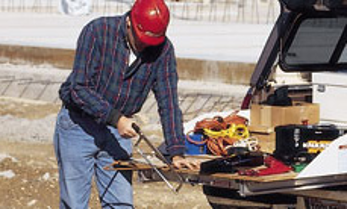
- Squats: Fundamental to knee strength, squats work the quadriceps, hamstrings, and glutes. Start with bodyweight squats, ensuring proper form with feet shoulder-width apart and back straight. As strength builds, consider adding light weights.
- Lunges: Another excellent exercise for targeting the muscles surrounding the knees is lunges. They not only bolster muscle but also improve balance. Step forward with one leg while keeping the upper body straight and lowering the hips until both knees are at 90 degrees. Alternate legs.
- Leg Presses: Using a leg press machine helps strengthen the quadriceps and hamstrings while being less stressful on the joints than squats. Position the feet shoulder-width apart on the plate and press with a smooth motion, avoiding locking the knees at full extension.
- Leg Extensions: This exercise isolates the quadriceps and can be done using a leg extension machine. It’s critical to avoid heavy weights as this can put undue stress on the knees. Use light weights and aim for higher repetitions.
- Hamstring Curls: Strengthening the hamstrings is crucial for knee stability. Utilize a leg curl machine to perform this exercise, paying attention to smooth, controlled movements without jerking.
- Straight-Leg Raises: While lying flat on the back, raise one leg while the other remains bent at the knee. This exercise helps strengthen the quadriceps and hip flexors without putting pressure on the knees.
- Calf Raises: Calf muscles support the knee joints by stabilizing the lower leg. Raise the heels off the ground by standing on the toes and subsequently lowering them back down in a controlled motion.
In addition to these exercises, stretching is essential to maintain flexibility and range of motion in the knee joints. Perform stretches for the quadriceps, hamstrings, calves, and hip flexors regularly to complement the strengthening routine. Construction workers should consult with healthcare professionals before starting any exercise regimen to ensure suitability and correct form, mitigating the risk of injury. Regular incorporation of these exercises into a fitness routine can significantly contribute to knee health and endurance on the job.
Feel good knee
Less pain, More Life
Stretching: The Key to Maintaining Flexibility and Preventing Knee Damage
For construction workers, whose tasks often involve heavy lifting and repetitive motions, maintaining flexibility through stretching is a crucial component of knee health. Stretching the muscles that support the knee – including the quadriceps, hamstrings, calf muscles, and hip flexors – enhances range of motion and reduces the risk of injury. This can provide several benefits:
- Reduces Muscle Tension: Tight muscles can pull joints out of alignment, leading to increased stress on the knee.
- Improves Circulation: Stretching increases blood flow, which can help with the recovery process and reduce soreness.
- Enhances Performance: Flexible muscles are more efficient and can better handle the physical demands of the job.
Workers should incorporate a daily stretching routine both before and after their shift, focusing on the following aspects:
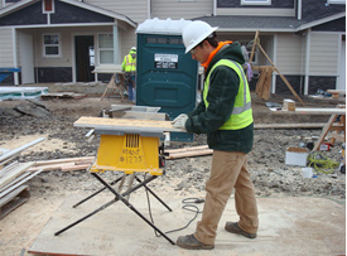
- Dynamic Stretching: Prior to starting the day, engage in dynamic stretches, which involve movement and are designed to warm up the muscles. Examples include leg swings and walking lunges.
- Static Stretching: At the end of the workday, static stretches can help cool down the muscles and improve flexibility. These stretches are held for a period of time, such as the hamstring stretch or the quadriceps stretch.
- Consistency: Stretching should be consistent to ensure ongoing flexibility and injury prevention.
- Proper Technique: Using correct form is vital to prevent overstretching or causing additional strain. Seek guidance from a physical therapist or fitness professional if unsure about the correct technique.
By integrating stretching into their daily routine, construction workers can better protect their knees from the rigors of their work, ensuring both career longevity and a higher quality of life.
Nutrition for Joint Health: Diet Considerations for Strong Knees
Proper nutrition plays a pivotal role in maintaining joint health, especially for individuals who work in physically demanding industries. For construction workers, incorporating the right nutrients into their diet is essential for ensuring strong, healthy knees capable of withstanding daily stresses.
- Omega-3 Fatty Acids – Found in fish like salmon and mackerel, flaxseeds, and walnuts, omega-3s can help reduce joint inflammation, a common source of knee pain.
- Calcium and Vitamin D – Calcium-rich foods such as milk, yogurt, broccoli, and fortified cereals, work synergistically with vitamin D to promote bone health. Adequate sunlight exposure and supplements can bolster vitamin D levels, critical for the body’s calcium absorption.
- Vitamin C and Antioxidants – Fruits and vegetables like oranges, strawberries, bell peppers, and spinach are packed with vitamin C and antioxidants, which aid in the production of collagen, a vital component of cartilage and bone tissue.
- Protein – Lean meats, poultry, beans, and legumes contain essential amino acids necessary for repairing tissues, including those in the knee joints.
- Water – Hydration is crucial as water helps maintain the elasticity and lubrication of joint tissues.
- Fiber – A high-fiber diet from whole grains, fruits, and vegetables can help in maintaining a healthy weight, thus reducing the strain on the knees.
- Avoid Inflammatory Foods – Limiting the consumption of processed foods, sugars, and trans fats, which can increase inflammation, is essential for joint health.
Incorporating these dietary elements strategically is not only healthy for construction workers but also acts as a preventive measure against the development of knee problems. Regular consultation with a nutritionist or healthcare provider can further tailor dietary choices to an individual’s specific health needs and working conditions.
Navigating Rough Terrain: Tips for Keeping Your Knees Safe on Unstable Grounds
Construction workers often find themselves moving across uneven surfaces that can pose significant risks to knee health. On rough terrain, maintaining knee safety requires both preparation and smart practices.
- Wear proper footwear: Select boots that provide ample support and have slip-resistant soles to maintain stability on uneven ground. The right footwear can also absorb some of the shocks that would otherwise be transferred to the knees.
- Use knee pads: Donning knee pads is crucial when you’re working on hard or uneven surfaces. They not only cushion the knees during kneeling but can also protect against sharp objects.
- Strengthen leg muscles: Strengthening exercises for the quadriceps, hamstrings, and calves can help stabilize the knee joints. Strong muscles contribute to better support and balance, reducing the risk of knee injuries.
- Stay aware of your surroundings: Always be vigilant of where you step to avoid unexpected holes or obstacles that could cause you to twist or strain your knee.
- Practice good body mechanics: When lifting heavy objects, bend with your hips and knees, keeping the knees aligned with the feet. Avoid twisting the body while carrying a load to prevent undue stress on the knee joints.
- Maintain a healthy weight: Excess body weight increases the strain on knee joints, particularly when navigating uneven terrain. Keeping body weight within a healthy range can reduce this stress.
- Use assistive devices when necessary: Leverage walking poles or handrails to help distribute weight evenly and maintain balance on particularly challenging surfaces.
Implementing these tips can help construction professionals protect their knees from the unique challenges posed by rough terrain, thereby maintaining their health and mobility in such demanding work environments.
The Role of Rest and Recovery in Knee Health for Construction Workers
In the demanding world of construction, knee health is critical. Yet, it is often compromised due to heavy lifting and constant stress on the joints. For construction workers, incorporating sufficient rest and recovery time is vital for maintaining knee integrity and function. Rest periods help mitigate the risks associated with overuse injuries, which can lead to chronic knee problems like tendonitis or bursitis.
Adequate recovery strategies should be a non-negotiable part of every construction worker’s routine. After intense physical labor, the body requires time to repair stressed tissues, and the knees are no exception. Including low-impact activities, such as swimming or cycling, on rest days can help maintain cardiovascular fitness while reducing strain on the knees.
- Ensuring regular, quality sleep is also essential, as it allows the body to heal and replenish energy stores.
- Employing proper stretching techniques before and after work can keep the knee muscles limber and less prone to injury.
- Additionally, incorporating strength training exercises for the muscles around the knee can provide better support and reduce the load on the knee joint itself.
- Nutrition plays a key role in recovery, with a balanced diet rich in protein, vitamins, and minerals aiding in tissue repair and inflammation reduction.
In conclusion, for construction workers, prioritizing rest and recovery is as crucial as any safety procedure. It not only aids in preserving knee health but also enhances overall well-being and work performance. Without adequate downtime, the risk of knee injuries becomes a pervasive threat, potentially leading to long-term disability and an inability to work in the physically demanding construction industry.
Incorporating Technology: Wearables and Apps for Knee Safety Monitoring
In the construction industry, maintaining knee health is vital given the demands of the job such as heavy lifting, repetitive motion, and frequent bending. Leveraging technology through wearable devices and mobile applications can significantly enhance knee safety.
Wearable technology has been undergoing a revolution, leading to the development of various devices specifically aimed at preserving joint health. For example:

- Smart knee braces equipped with sensors can monitor the angle and force exerted on the knee joint in real-time, alerting the wearer to adjust their posture or take a break.
- Pressure-sensing insoles that fit inside safety boots can track the distribution of body weight, helping workers maintain balance and reduce strain on their knees.
- Motion-capture suits allow for a comprehensive analysis of the wearer’s movements, identifying potentially harmful patterns that could lead to injury.
In addition to wearables, applications on smartphones or tablets can serve a crucial role in knee safety by:
- Providing reminders to users for stretching and taking breaks, which helps in reducing prolonged knee stress.
- Offering instructional videos and guides on proper lifting techniques and ergonomically correct postures.
- Allowing for the tracking of physical activity levels, enabling the identification of periods of excessive knee strain.
- Facilitating quick access to knee support exercises and rehabilitation programs.
Integrating these technologies into daily routines helps construction workers receive immediate feedback on their movements and overall knee health. This proactive approach allows for the mitigation of knee-related risks before they result in injury, ensuring the longevity and well-being of workers’ knees. The investment in such technologies is a strategic move towards fostering a safer working environment and promoting the health of one of the most valuable assets a construction worker possesses — their mobility.
When to Seek Professional Help: Understanding Signs of Serious Knee Injuries
Certain symptoms suggest that a knee injury might be serious and warrant professional medical attention. In the construction industry, where physical demands can be intense, recognizing these signs is crucial for maintaining long-term knee health. Here are the signals that should prompt consideration of professional evaluation:
- Persistent Pain or Swelling: If knee pain or swelling does not subside with rest, ice, compression, and elevation, this could indicate a more serious injury.
- Inability to Bear Weight: Trouble or inability to bear weight on the affected leg, or feeling instability or weakness when you try to walk, requires prompt medical attention.
- Visible Deformity: Any obvious deformity in the knee region, such as a noticeable change in the shape or orientation of the knee, is a clear signal to seek professional help.
- Reduced Range of Motion: If the knee cannot be fully straightened or bent, or if the range of motion is notably reduced compared to the unaffected knee, this is cause for concern.
- Popping or Crunching Noises: A popping sound at the time of the injury, or recurring crunching sounds when moving the knee could indicate ligament damage or a meniscal tear.
- Inability to Perform Daily Activities: Difficulty or inability to perform usual activities, such as climbing stairs or getting up from a seated position, can be indicative of significant injury.
- Signs of Infection: Symptoms such as fever, warmth, redness, or significant swelling around the knee may suggest an infection, which requires immediate medical assessment.
Construction workers should never ignore these warning signs. Early diagnosis and treatment can prevent further damage and help ensure a full recovery. Occupational health services often work closely with the construction industry and are familiar with job-related knee injuries, making them an excellent initial resource for knee-related concerns.
Creating a Culture of Safety: Encouraging Team Accountability for Knee Protection
In the construction industry, personnel often perform tasks that put stress on their knees, making the need for knee protection vital. Creating a safety culture where everyone is accountable for knee safety can dramatically reduce the risk of knee-related injuries. When a team is collectively responsible, each member is more inclined to follow best practices and encourage others to do the same.
Developing Team Protocols
- Establish clear protocols for knee safety, including the proper use and maintenance of knee protection equipment.
- Conduct routine inspections to ensure compliance with safety standards.
- Implement a system for reporting wear and tear on protective gear, facilitating timely replacements or upgrades.
Training and Education
- Organize regular training sessions to educate workers about the importance of knee protection and the potential long-term impact of knee injuries.
- Utilize experienced team members to mentor newcomers, emphasizing the practical application of knee safety measures on-site.
Open Communication Channels
- Create an environment where workers feel comfortable discussing safety concerns without fear of reprisal.
- Encourage feedback on the effectiveness of knee protection equipment and procedures.
Recognition and Reinforcement
- Recognize and reward adherence to safety protocols to reinforce the importance of knee protection.
- Share success stories and best practices among the team to highlight the benefits of a proactive approach to knee safety.
Continuous Improvement
- Regularly review and update safety protocols to incorporate new technology and feedback from the team.
- Involve team members in the decision-making process for selecting knee protection equipment to ensure it meets their needs and preferences.
Cultivating a culture of safety focused on knee protection is a continuous process that demands active participation from all team members. By prioritizing education, communication, and reinforcement, a construction team can embed knee safety into everyday practices, leading to a healthier, more productive workforce.
Read: photo of the Day Musculoskeletal disorders
Conclusion: Sustaining Knee Health for a Long, Productive Career in Construction
Maintaining healthy knees is not just about immediate comfort—it’s a long-term investment in a construction professional’s career longevity and quality of life. Implementing strategic measures can significantly reduce the risk of knee injuries and chronic conditions that might otherwise lead to pain, disability, or even early retirement from the physically demanding construction industry.
Construction workers must incorporate a holistic approach to knee care, which includes:
- Proactive Prevention: Regularly engaging in knee-strengthening exercises and stretching to keep the joints flexible and muscles supportive.
- Technique and Training: Utilizing proper lifting and carrying techniques to distribute weight evenly and minimize pressure on the knee joints.
- Supportive Gear: Investing in high-quality knee pads and supportive footwear to cushion the knees during long hours of kneeling or standing on hard surfaces.
- Smart Work Habits: Taking frequent breaks to stand and walk around if a task requires extended periods of kneeling or squatting. Planning tasks efficiently can also reduce unnecessary knee strain.
- Health Monitoring: Seeking early intervention from health care professionals at the first sign of knee pain, rather than ignoring symptoms, ensures that minor issues can be addressed before they escalate into serious problems.
By giving priority to knee health, construction workers empower themselves with the ability to enjoy not just a thriving career but also an active, pain-free life beyond the worksite. It is essential to remember that every precaution taken today contributes to a safer and more sustainable working environment for years to come.


